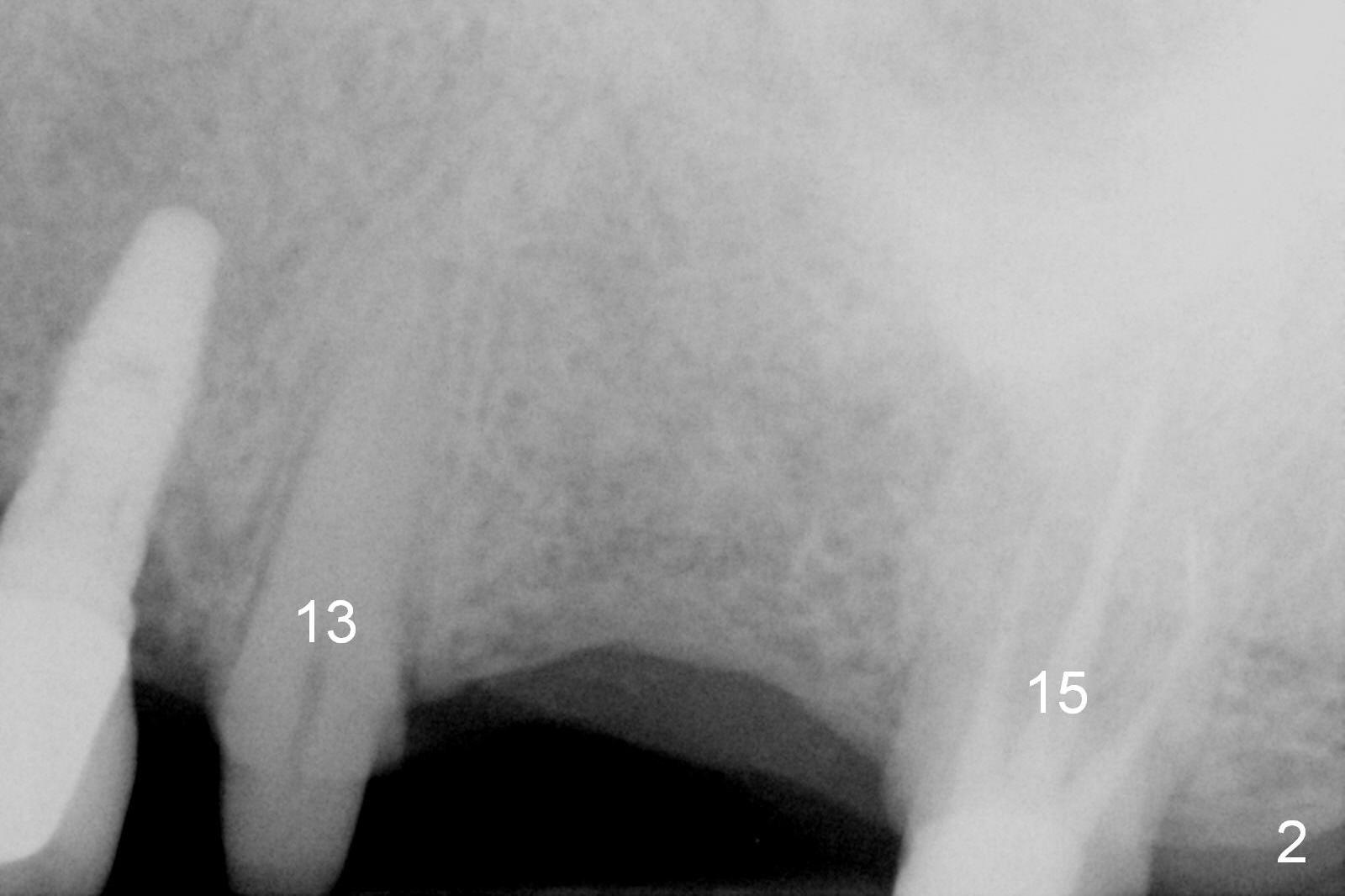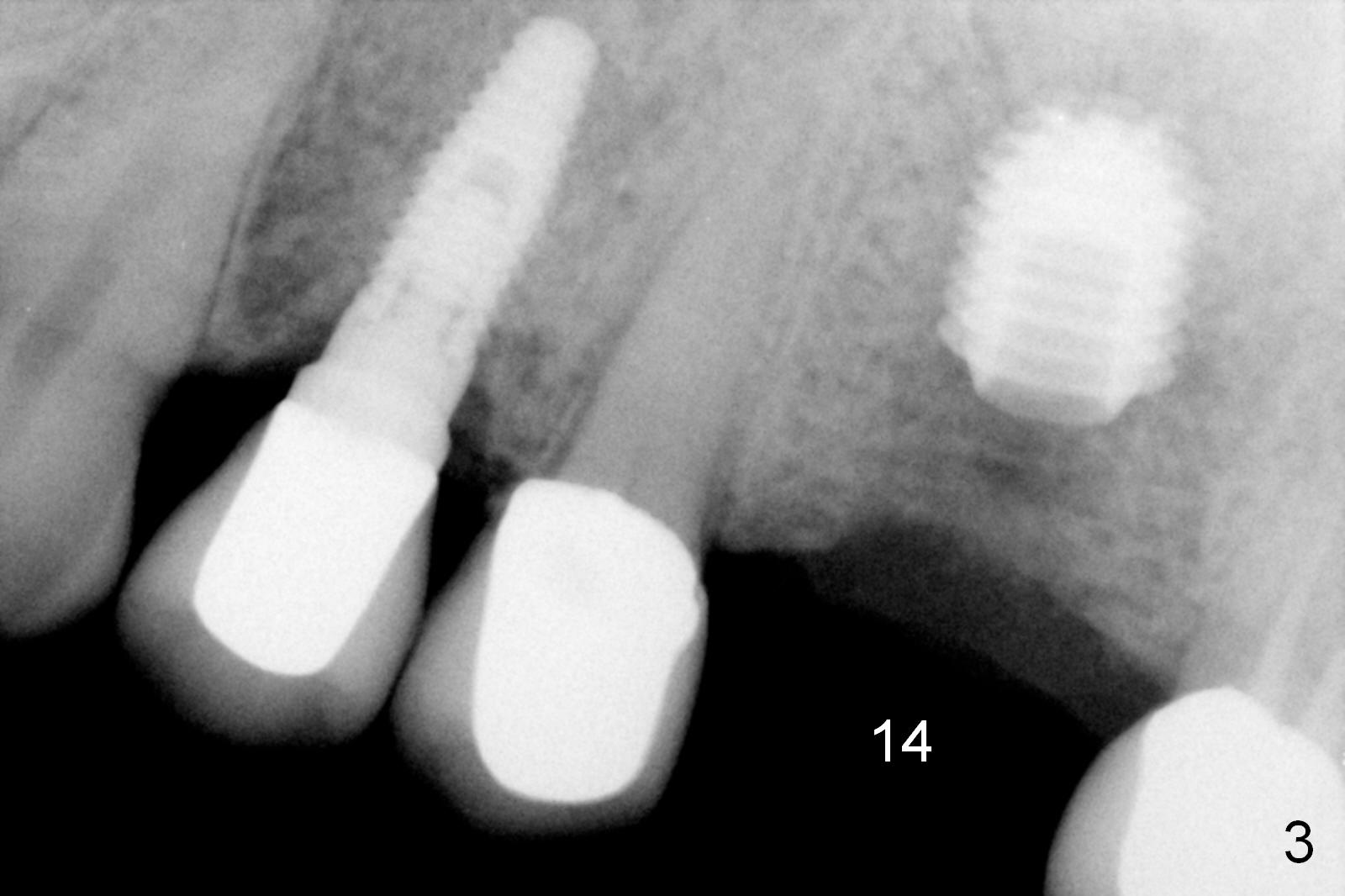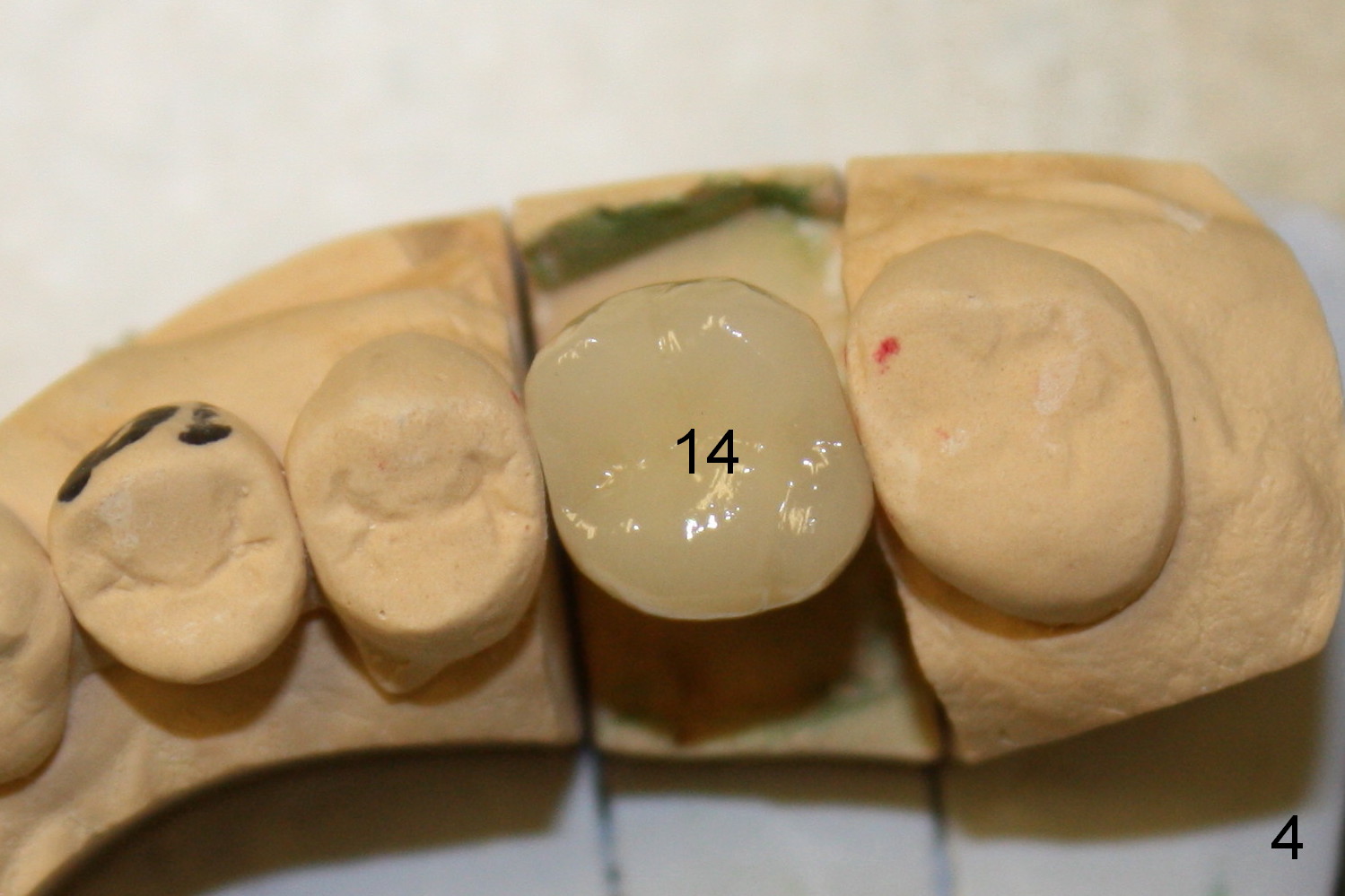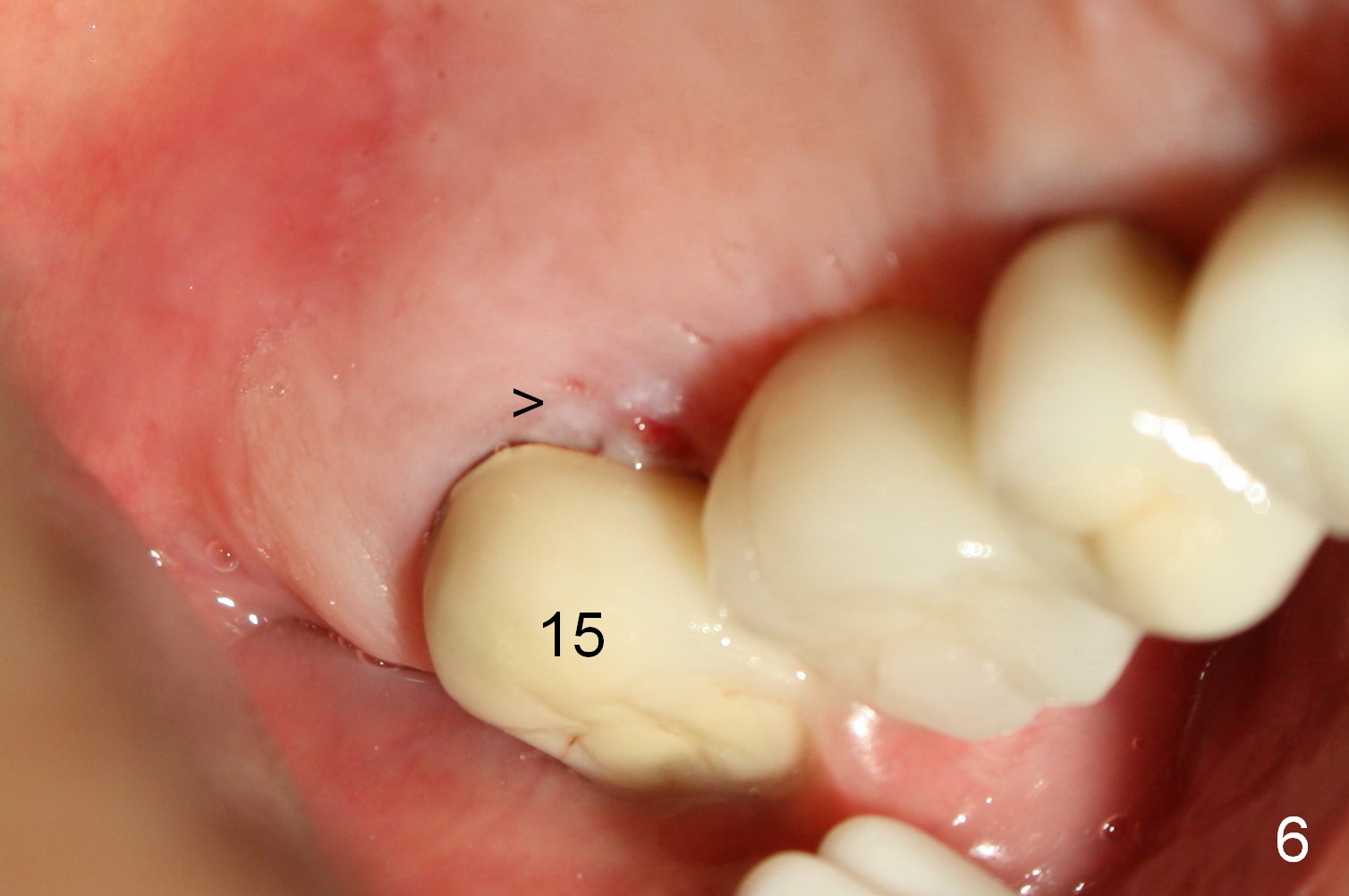





 |
 |
 |
 |
 |
 |
Short, Long, Small and Large Implants Work Equally Well for this Bruxer
A 73-year-old man returned for recall and had panoramic X-ray taken yesterday. The latter shows no bone loss associated with different types of implants (Fig.1). The implants (relatively small in diameter) and crowns were present at the sites of #3 and 12 when the patient presented to my clinic 6 years ago. His chief complaint was discomfort at #13-15 fixed partial denture (FPD). The tooth #15 seems to be without pathology. To increase its longevity, the FPD was removed (Fig.2), a 5x8 mm Bicon implant (short) was placed at #14 (5 years 11 months post cementation now) and single unit restorations were cemented at #13 and 15 (Fig.3). The occlusal table of the implant crown at #14 is narrow buccopalatally (Fig.4). The occlusal contact of the implant restoration is minimal (Fig.5), which is unfavorable for the weakened tooth (#15). The latter shows sign of failure 7 months post #14 crown cementation (Fig.6 >). The patient refused to accept treatment for #15. Seven months later, the tooth #5 fractured (1st sign of bruxism) and a 5x20 mm cylindrical Tatum tissue-level implant (long) was placed immediately (4 years 5 months in function now). Finally the patient agrees with immediate implant at #15 (7x17 mm tapered Tatum tissue-level implant, large). Follow up is 2 years 7 months post cementation. Ideally 2 implants should have been placed when the FPD was removed. To reduce deleterious effect of bruxism, the last implant was placed with bone expansion at the edentulous area at #2 (5.3x14 mm DIO submerged implant, 1 year 9 months post cementation now). The 2nd sign of bruxism is placement of inlay/onlay on the teeth #19 and 30 (Fig.1). The palatal cusp of the implant crown at #13 remains untreated. The 2 immediate implants at #5 and 15 happen not to have immediate provisional. In all, for a bruxer, an implant does not have to be large or long as long as implant trajectory is correct.
Return to Upper Molar Immediate Implant, Long term Follow up #5,13 Xin Wei, DDS, PhD, MS 1st edition 05/10/2016, last revision 09/09/2018